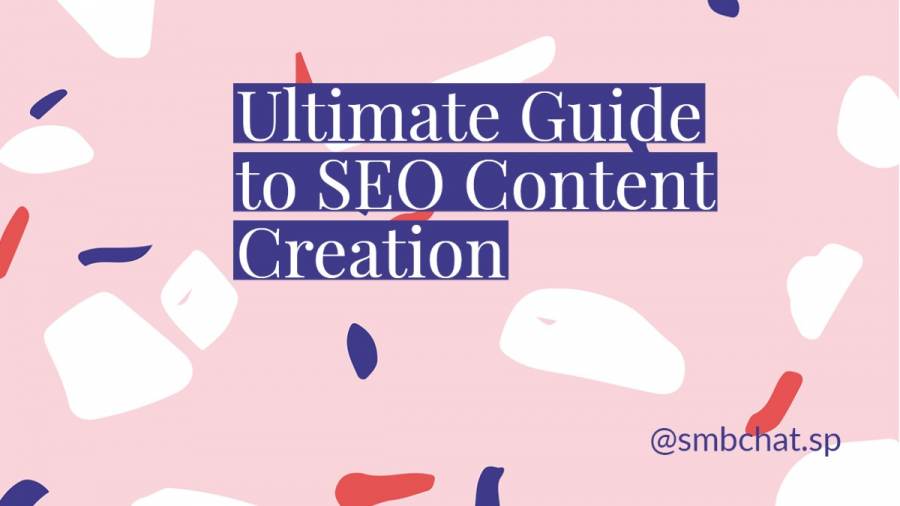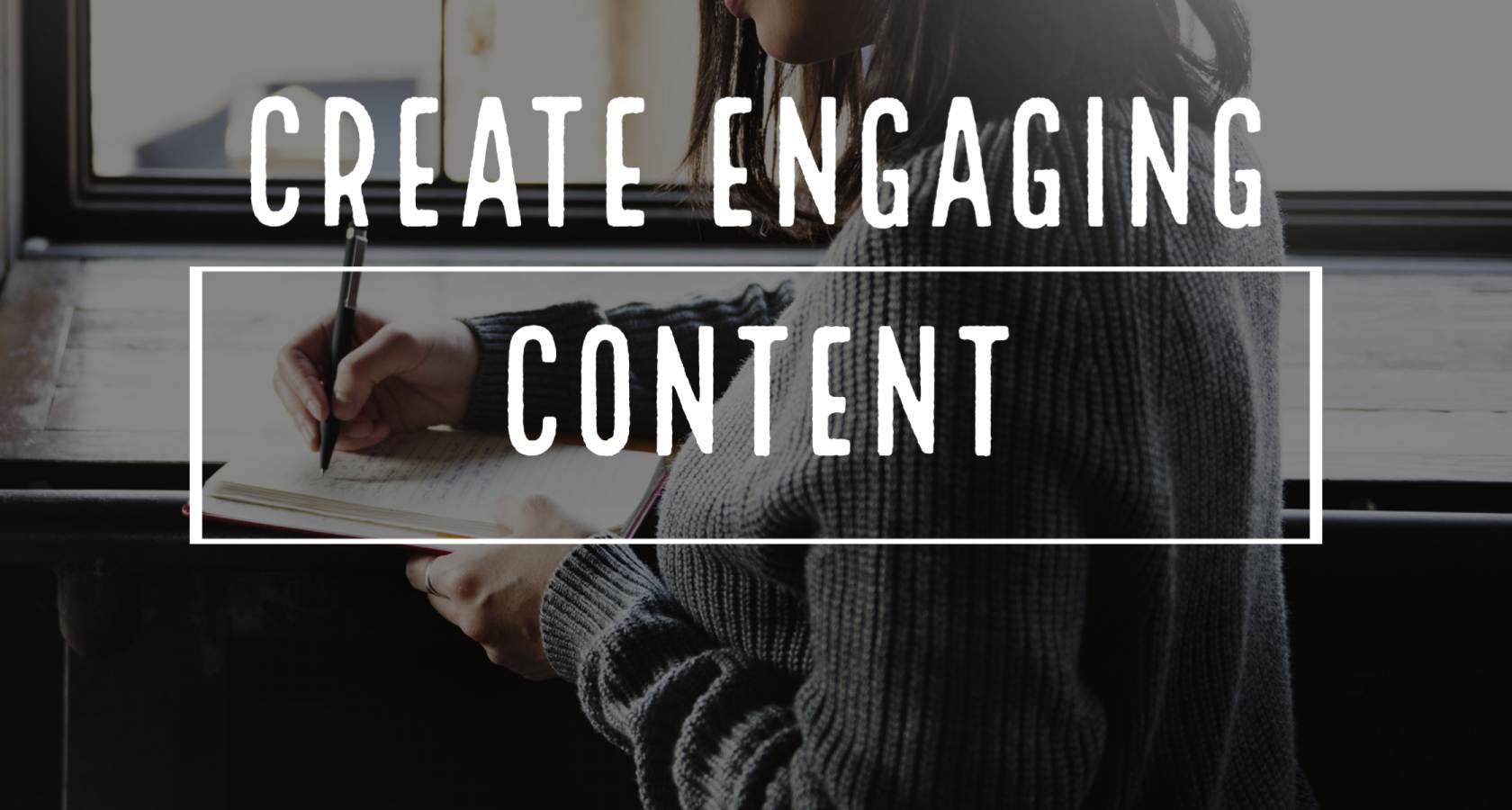11 Ridiculous Tips on Optimizing Your Website Content
How can you make your website content easy to find or reach the right readers?
Before you discover that,
I love a Neopolitan–more than the next guy–once a week and twice on the weekends.
The delicate balance of vanilla, chocolate, and strawberry flavors makes it a beloved treat to many. Not to forget the famous tune that trucks use to lure ice cream lovers.
It’s the ‘X marks the spot’ for fellow ice cream enthusiasts.
Your readers and customers shouldn't have to scour the internet looking for your content. They shouldn't unturn any stone, let alone all.
You can include several activities in your content marketing strategy to boost your website content while following some incedible website writing golden rules.
So after you've mastered the anatomy of outstanding website content, grab your favorite ice cream and learn more about website content optimization.
What is Website Content Optimization?
Website content optimization involves improving your website's readability, usefulness, and accessibility.
Think of optimizing your website content like having a bucket of your preferred ice cream flavor complete with all toppings and other goodies.
When people search for keywords related to your industry, you want them to find your site first. You can achieve this by writing optimized copy that conveys what they're looking for while still being easy to understand.
Importance of Website Content Optimization
You should optimize your website content to:
- Attract more organic traffic
- Boost lead conversions throughout the buyer’s journey
- Improve user experience
- Make your content super exciting and engaging
- Rank higher in search engine results
- Make it easier for customers and readers to know what they are looking for
- Enhance brand visibility and reputation
Behold, the Website Content Optimization Tips
Using a regular metal spoon, adding fun mix-ins (try diced mango purée) for crunchiness, and ice cream sandwiches are among the few ways of boosting your ice cream experience.
Similarly, the following are ways to optimize your website content:
1. It’s Always About Your Readers, Always!
So start writing for and to them!
Once you know what your readers are looking for and interested in, it's time to create content that addresses those questions.
As a rule of thumb, if readers pose a question that you don't have an answer to yet, see if you can provide one in an article or blog post. It’s a great way to attract new visitors who will hopefully become loyal followers of your brand and give you valuable data about how people search and research topics online.
Fortunately, you can use keyword research tools, such as Google Keyword Planner, Moz Keyword Explorer, and SpyFu, among others.
Use this info in deciding which topics you should address on your website so that users find what they need without having to dig through irrelevant information. It also helps improve user experience via any necessary changes/updates you make during development processes.
2. Use High-Quality Keywords
There are two main things you'll want to ensure: relevance and readability when it comes to keyword optimization.
Relevance means that the keyword is something your potential customers would search for. If you're writing an article about how to make pancakes, your keyword should include "pancakes" or something similar.
Relevance also includes reading level. You want keywords that fit your content and are simple enough for most people to understand without looking up definitions or researching before reading further into the article (or buying a product).
For this, use words with fewer syllables and simpler syntax (e.g., "learn" instead of "understand").
3. Be Concise, and Don't Waffle.
Don't waffle–not the delicious breakfast snack!
Make sure your content is as concise as possible, with no unnecessary words or phrases.
Avoid long sentences and paragraphs, eliminate filler words such as "a lot" or "a little," adjectives and adverbs that aren't adding any valuable information to the sentence, and jargon that only people in your industry will understand.
For instance: "We're looking for a person who can lead our team's eCommerce efforts by leveraging their technical knowledge." instead, consider "We're looking for someone who knows how to use eCommerce software."
Finally, be honest about what you know and don't know. It's OK if your ecommerce store or website has some gaps; just be transparent about them!
Create scannable and digestible website content
Make it easy for readers to scan and digest the main points of your content.
To achieve this, use short sentences and paragraphs to break up text longer than two or three lines.
Heck, even ice cream has divisions between scoops and flavors!
Use bolded text to draw attention to important points within your paragraphs or lists (you can do this automatically by software like the Hemingway Editor). You can also use italics instead of bold if you prefer!
Use subheadings at the top of each section in your article. Help readers navigate longer content easily without feeling overwhelmed by a wall of text on their screen size limits.
This is vital, especially when using mobile devices with smaller screens than desktop monitors.
4. Longer Isn't Always Better!
While you can appreciate an extra or two free scoops, your readers might not.
If you’re thinking of adding long, convoluted paragraphs to your website, think again. Long, drawn-out content is the sign of an amateur and doesn’t bode well for your SEO. People just don’t have time to read through these things.
Sure, you may have some very insightful things to say and a lot of information that you think is important for your audience to know.
More length means:
- Fewer readers will read the entire content.
- Fewer people will share it. While sharing good content is vital for driving traffic back to your site, no one wants to read something long and share it with their networks.
- Length can also affect how many times someone links back to your site — because again...no one wants to scroll down through endless paragraphs before getting anything useful!
There’s only soo much ice cream you can eat before risking your health or turning into the ice cream man.
5. Use Bullet Points or Numbered Lists
If your content has a series of steps or actions, you'll want to use a numbered list. If the steps are sequential, then definitely go with numbers. If they're not sequential, use bullets instead.
Bullet points work well for simple processes and complex processes that you can break down into individual tasks the reader can tackle one at a time.
On the other hand, consider ordered lists rather than bullet points for a series of long steps (more than five). Otherwise, the line length gets too long.
6. Prioritize Quality Over Quantity
This is one area numerous content creators and brands mess up.
You shouldn’t!
Adding more and more information to your website doesn't always impress your customers or readers.
In worst cases, they might get bored or repulsed before getting anything helpful.
Instead, focus on producing high-quality content (like blog posts) instead of writing for quantity's sake. Your audience will appreciate it far more than if you simply added another blog post with fluff text about yourself or your company's services/products.
So long as you're adding quality content to your website frequently enough (especially for blogs), there's no need to flood visitors with generic information that nobody cares about anyway!
While you are at it, ensure your website content is relevant, up to date, and free of grammatical errors.
7. Make Visuals Your Best Pal.
Visuals add more flavor and relevance to your website content.
Besides, the human brain can absorb visual content 60,000X more than boring lines and paragraphs of content.
Visuals elicit emotions and higher creativity allowing your readers to enjoy your content more.
Some content to use include:
- Images
- GIFs
- Charts
- Presentations
- Videos
- Memes
- Infographics
- Music
While these work great, use them sparingly and where they are most relevant. For instance, avoid using memes and GIFs in formal copy like WhitePapers. Instead, use infographics, images, videos, and charts.
8. Use Catchy Titles, Headlines, and Subheadings.
When welcoming a guest into your home, you’ll be amazed how much a beautiful welcome mat can help.
In your case, your welcome wagon should begin with the title and headlines. They hook readers in by making them curious and excited about what they will learn next.
The subheading can expand on the topic or provide more information about it.
Titles, subtitles, pull quotes (quotes that appear near the top of an article), catchy phrases like "How To" or "Do This/Don't Do That," statistics that prove your point, question marks at the end of sentences...these are all ways to get people interested in your content!
9. Optimize page titles, headlines, and descriptions
And how successful would you be without keyword optimization?
For the primary keyword:
- Use it in the content’s H1 tag. It's one of the first things that a user sees on any given webpage, so make sure you're using this space to emphasize its relevance.
If your site doesn't have an H1, this could simply mean that there aren’t any relevant headers being throughout the site yet.
- Put the primary keyword in the title of your page, header tags, meta description, and body text. (and any sub-pages).
- Use the primary keyword in the first paragraph of your page.
- Use a variation on that exact keyword or phrase in at least one other spot on the page (you won't want to overdo it).
These practices help search engines better understand what your content is about so they can present it to your readers more effectively.
10. Include Internal and External Links
Including links within the text itself is an important step is vital in website content optimization.
Ensure these links are relevant and valuable for the reader, though—you don't want to give them an excuse not to click through.
To ensure that your visitors can easily find and use the links,
- Linking back to pages within your website or blog (internal links) and links to external content (external links).
- Use clear and elaborate anchor text when linking back to internal pages. It helps users understand what they'll be clicking on when they visit another page.
- Don't use more than one link per paragraph; if there are multiple things worth linking back upon, then separate them into different sections instead of trying to do it all at once!
Remember that people won't necessarily realize which word is supposed to represent the link until after reading past each sentence's end punctuation mark."
11. Create Compelling Calls to Action (CTAs)
CTAs are important because they tell the reader what you want them to do next. Calls to action can be in the form of a question, a statement, or both. Place them accordingly, depending on the type of website content. 4
For instance, at the end of a blog post or the beginning, center, and end of a web sales copy.
CTAs are significant in your marketing efforts to increase conversion rates by giving readers clear instructions on what you want them to do next.
You must know precisely what content is going on your website and how it will benefit the reader when they get there.
Do you Need Help Optimizing Your Website Content?
Like my favorite Neopolitan, your website content should be well balanced, super delicious, and insightful to your readers/customers.
Your readers want to find information as quickly as snapping their fingers!
While optimizing your content is vital, it's just one ingredient in a vast content marketing strategy. That’s why you can’t afford to overlook or undermine it.
To ensure you get it right, consider Zoey Writers. Our expert content creators are ready to develop and optimize your content to give you all the outlined benefits and then some. Whenever you are ready, reach out to us, we’d like to hear what type of content you need. We’ll do the rest.
Photo by Mohamed Hassan from Pixabay. Thanks, Mohamed:)

















